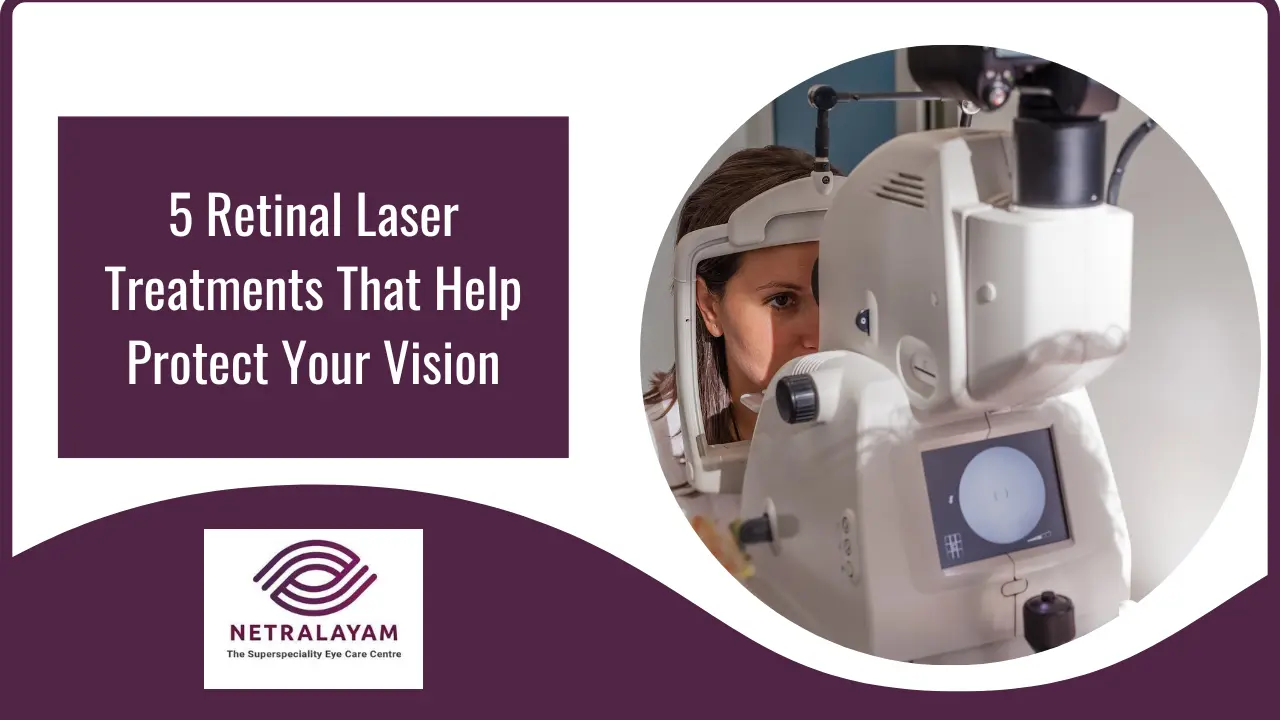Committed to Eye Care with Compassion, Technology and Competency
Committed to Eye Care with Compassion, Technology and Competency

5/26/2025
Your eyes are one of your most vital senses, and retinal health plays a crucial role in maintaining clear vision. When retinal conditions develop such as diabetic retinopathy, retinal tears, or macular edema, timely intervention is essential to prevent vision loss. Retinal laser treatment offers a precise, minimally invasive solution to protect and preserve your sight. Diabetic eye disease, retinal tears, and vein occlusion can be managed with these procedures, helping you make informed eye care decisions.
Read on to explore five key retinal laser treatments, how they work, and the conditions they treat.
Retinal laser treatment involves using highly concentrated light beams to precisely target and treat areas of the retina. This procedure works by creating tiny burns or sealing areas of the retina to repair damage, stop leaks, or prevent the growth of abnormal blood vessels
Common retinal conditions treated with laser therapy include:
Compared to conventional surgery, laser treatments are generally non-invasive, carry fewer risks, and offer faster recovery. Patients can often resume normal activities within a short time after the procedure.
Retinal laser treatments are essential for addressing serious eye conditions.
Here’s a look at the major types and how they help protect your sight:
This treatment targets specific leaking blood vessels, commonly used for conditions like diabetic macular edema. By sealing the leaking vessels, it helps reduce retinal swelling and prevent further damage, protecting central vision from deterioration.
Applied in a grid pattern over the affected areas of the retina, this technique is especially effective for diffuse diabetic macular edema. It reduces fluid buildup and stabilizes the retina, improving vision and preventing further complications.
PRP is used to treat proliferative diabetic retinopathy, a severe form of diabetic eye disease. The treatment targets the peripheral retina to shrink abnormal blood vessels, reducing the risk of retinal detachment and preserving central vision, even though it may cause some loss of peripheral vision.
Laser treatment for retinal tears seals the edges of the tear, preventing fluid from seeping underneath and causing retinal detachment. This quick, outpatient procedure is highly effective and helps avoid the need for more invasive surgery.
This treatment addresses blocked retinal veins, a condition that can lead to swelling and fluid accumulation. By reducing fluid buildup and stabilizing the affected area, laser treatment helps manage complications, often in combination with other therapies like injections for optimal results.
Selecting the right retinal laser treatment depends on several factors. Ophthalmologists use imaging tests like OCT and fluorescein angiography to assess retinal damage and plan the best treatment.
The choice is influenced by:
Retinal laser treatments have transformed the management of sight-threatening eye conditions, from sealing retinal tears to reducing macular edema. Understanding these treatments helps you make informed decisions about your eye health.
Regular eye exams are essential, especially for those with diabetes or a history of retinal problems. Early detection and timely intervention can significantly protect your vision.
Protect Your Vision with Laser Treatments at Netralayam
Safeguard your vision with expert care from Netralayam. Our advanced retinal laser treatments are designed to manage and stabilize a range of eye conditions, helping you maintain clear and healthy sight.
Contact us today to schedule your consultation.
Comments are closed
